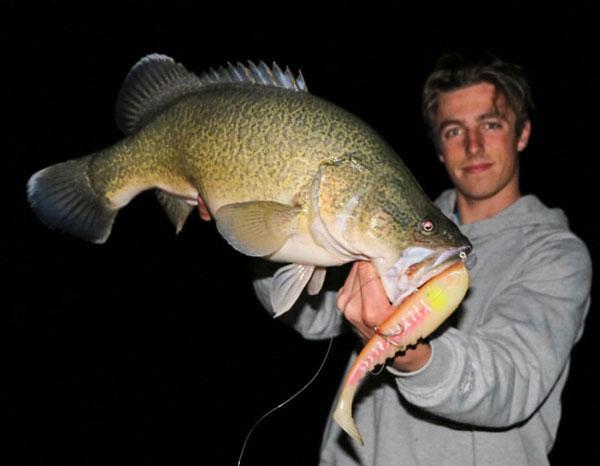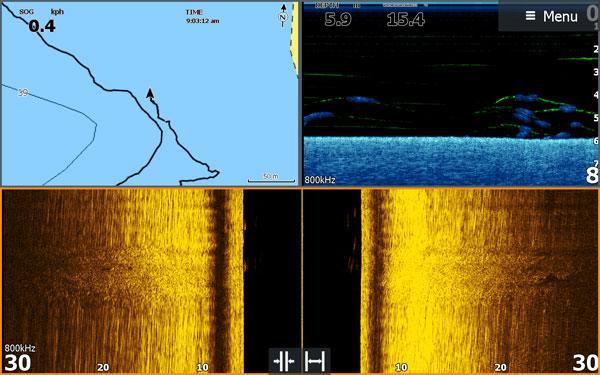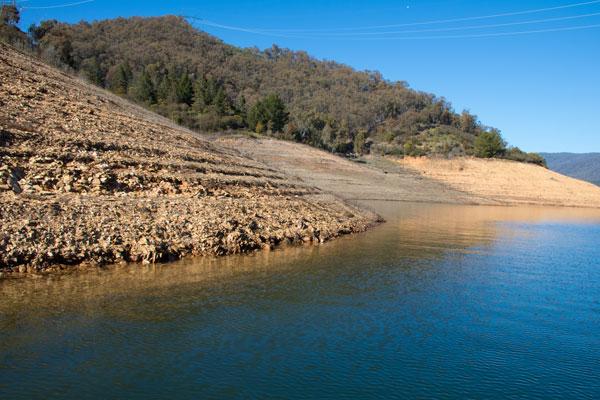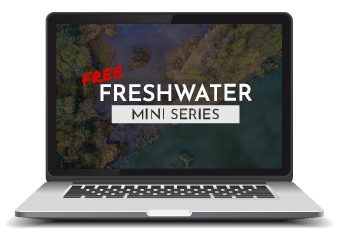As always, winter is one of the most rewarding times of year to chase giant Murray Cod, but it’s also the toughest time of year. Now it’s time to leave the cold behind as we are only weeks away from my favourite time of year, spring!
It’s exciting as we now have a new fishery with Eildon, Blowering and Copeton being open year-round for Murray Cod. Last season was a learning curve as it was the first-time targeting cod at this time of year. Towards the end of the spring I figured out how they behave, and I want to share what I’ve learnt with you.
We can’t continue to use our ‘winter tactics’… it’s time for a change. With the water temperature rising the fish will act differently and this means we need to adapt our approach.
Here are my tips for targeting cod in spring…
From Shallow to Deep
During winter the water temperature is low, and the cod pushed into the shallows due to the warmer water and the bait. This is where anglers have had joy, intercepting them while they are looking for their next meal on the flats.
Other anglers have been finding success on the steeper banks. Usually in these areas the hits come early in the retrieve or even in the top half of the water column.
As September ticks over the approach to where and when we fish will change.
The warmer water will send the bait deeper and the cod will follow. The cod will still be in a range of different depths, but the steep rocky banks need to be your main target. This is where majority of the fish will be hiding. They have actually been there all winter; it’s just now they have become active which means these are going to be the most productive areas in spring.
Sitting your boat in 8-10 metres and hoping a sinking lure (soft plastic, mumbler, spinnerbait etc) down the bank is such a deadly technique at this time of year.
Moving from the shallow grassy flats to rocky banks is very important for spring success.
Numbers Over Size
As the water temps begin to rise, we will start to notice a huge increase in hits and fish being caught. Over winter the smaller fish become extremely dormant and it’s very rare to hook anything under 70cm. Put it this way, a 110cm + cod would be more common than one at 70cm.
In spring the smaller fish fire back up and start feeding. Due to more smaller fish being active we will start to notice a lot more hits in a nights fishing. Five hits in a night wouldn’t be uncommon but most of these hits will be from smaller cod. In winter about 1 in every 5 hits may be a metery but in spring it may take 20 smaller fish to find one of the big girls.
Even though the fish are smaller, a nights fishing can be a lot more fun than your average winter session. It’s certainly the time of year to take your mates that aren’t quite into fishing yet because some nights will be action packed and the warmer weather makes it much more enjoyable.
The Key Bite Windows
Over the cooler months the first light period, is by far the most consistent bite window for cod. In spring this doesn’t change a great deal, first light is still a key period, along with a few other key times.
The keys bite periods:
- First light
- Last light
- During the dark
These three bite periods are consistent throughout the year as I mentioned. In saying that, some are better than others depending on the time of year. In spring, they all will fish consistently well.
Funny thing is, these bites windows change from trip to trip. It became noticeable last spring with a few bite periods blowing us away. Rhys and I experienced 7 hits in an hour and another couple times 2 or 3 hits in half an hour during our night sessions. The rest of those nights were dead quiet and then all the sudden they switch on!
Why the bite windows changed
The frustrating part was that we could never quite put our finger on why they were happening. Sometimes it was the moon, sometimes it was a weather change but usually it was completely random, they were just on! A lot of the times the hits were small but a lot of us hadn’t experienced bite periods like that before.

During the dark is the authors favouirte time to fish in spring - this is when the fish are most active
Just like any other time of the year, fishing during the night is key. We found pushing through past midnight usually increased your chances. A lot of times between 12 and 1 would be very successful. Also take note on the moon because fishing when it’s just rising, or setting can also switch them into gear.
In saying that most of the time it’s about casting in the right areas until you find them. Remember if you do land a fish, get your lure back in the water asap because you may be able to turn one fish into 3 or 4!
No Bait, No Fish
Over the cooler months finding baitfish has been extremely important and you should continue to search for them as the temperature climbs. The cod are starting to feed more and this means they will be looking for the best feeding opportunities. These big fish are smart and if you can find a school of small Redfin or carp, the big cod won’t be far away.
How to Find Bait – without a sounder
Rocky points, wind-blown banks and submerged timber are all likely spots to find actively feeding cod. Even if you don’t have a sounder, concentrate on these areas. There is a high chance there will be baitfish and hungry cod in these areas.
The key tip for fishing without a sounder, is to cover water quickly until you catch a fish (or get a hit). Once you find fish, stay in the area.
How to Find Bait – with a sounder
Having a sounder gives you a massive advantage as you can pinpoint the schools of fish and bait.
You still want to fish these same banks, but now you can search them before wasting time. If your sounder has little to no activity, I wouldn’t even bother! Move spots until you come across the bait and work it until the cod wants to bite. If you mix baitfish with those key structure types, there will be hungry cod close by.

Screenshot: This shows a school of medium sized Carp on the top right of the screen, this is what you want to look for

Screenshot: this shows a massive school of Redfin on the Downscan (top right) and the Sidescan (bottom). The bright white dots are the Redfin.
If you do spot cod on your sounder be sure to stop and fish it hard. Having a versatile lure that allows you to fish all depths will help with finding the fish. Mix up your retrieval pattern and implementing a pause a few times during the retrieve. Don’t be afraid to work your lure mid water column every few casts because the fish could be anywhere if they are actively feeding on bait.
Changing Your Lures
Changing up your go to lures at this time of year is a must. The winter baits such as surface lures and slow sinking swimbaits aren’t as vital in spring. The cod are deeper and the natural look of a swimbait isn’t as important. The lures we need are ones that hold the bottom and catch the attention of a hungry cod.
My Top Two Lure Choices
My two favourites lure options are; chatterbaits/mumblers and soft plastics. These lures are so easy to fish and match all needs to trick an impoundment cod. They both look natural, create vibration and can be worked however you like in the deeper water. No matter where the fish are sitting these two lures will get there and the cod will not hesitate to turn on them!

Mumbler (left) soft plastic (right) are both perfect lure options at this time of year when chasing active cod!
One observation from last year, was how many fish were missed. Majority of the fish are smaller than that of what we chase in winter, which means they were struggling to hook-up on our large 200mm plus lures. Also, while working steep banks there are a lot of pauses and the cod always manage to hit you while your line is slack, this resulted in a poor hook-up rate.
Downsize and Customise your Lures
For this season we have adapted our rigging styles, adding more prominent hooks under the belly and on the head of the plastic. One I recommend is the Swinging Hook rigging style we use on the IGNITE Cod Fury.
The IGNITE Cod Fury is available to purchase here
Downsizing your lure is vital in sticking those hits. Using a 150mm lure instead of a 250mm will help your hook-up rate and a metre plus cod will still take a smaller presentation. When letting your lure fall try to keep your line tight so if a fish does hit, they don’t have the chance to spit it back out. We have also found that the cod hit the head of the lure, this is why we add a treble to the front of the plastic. You will still miss fish during spring, we all do, but these little tips may increase your conversion rate.
As this is only a new style of fishing, there will be so much more to learn but for now I hope these tips can point you in the right direction. The approach you used in winter won’t get you very far in spring, so this transition is critical. If you haven’t fished for cod in spring before, be sure to give it a crack this year.
Remember only Eildon, Blowering and Copeton can be fished this time of year and size limits still apply. Good luck and enjoy the warmer weather!
Tallis Cotterill
Related Article: Read this story about Tallis’ metre plus cod caught in Blowering Dam during spring






0 comments